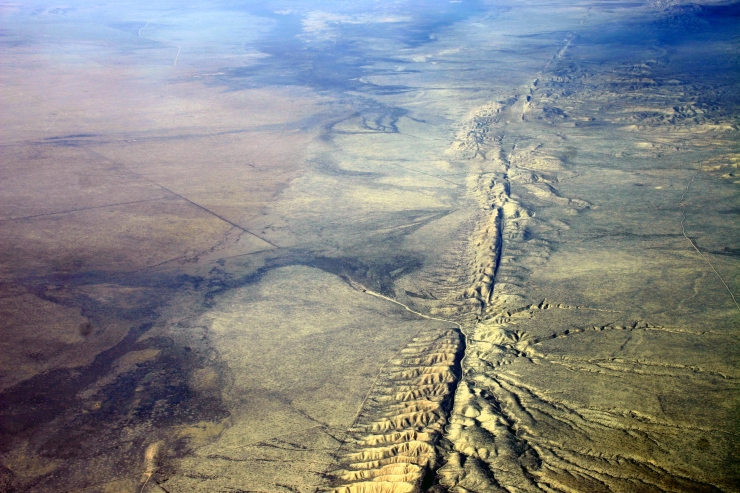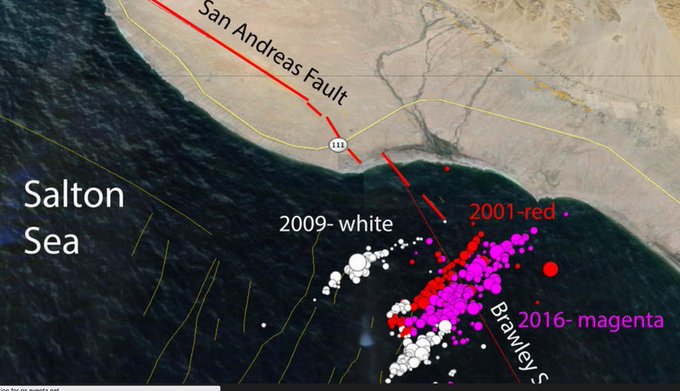 A cloud of ash rises from the volcano under the Eyjafjallajökull glacier in Iceland in May, 2010, causing chaos for millions of airline passengers as flights were cancelled across Europe.
A cloud of ash rises from the volcano under the Eyjafjallajökull glacier in Iceland in May, 2010, causing chaos for millions of airline passengers as flights were cancelled across Europe.
Photograph: Ingolfur Juliusson/Reuters
Devastating hurricane? More than 1,000 lives lost? It must be climate change! Almost inevitably,
Hurricane Matthew’s recent rampage across the Caribbean and south-eastern US has been fingered by some as a backlash of global warming driven by humanity’s polluting activities, but does this really stack up?
The short answer is no. Blame for a single storm cannot be laid at climate change’s door, as reinforced by the bigger picture. The current hurricane season is by no means extraordinary, and the last few seasons have actually been very tame. The 2013 season saw no major hurricanes at all and tied with 1982 for the fewest hurricanes since 1930. This, in turn, is no big deal as there is great year-on-year variability in the level of hurricane activity, which responds to various natural factors such as El Niño and the so-called Atlantic Multidecadal Oscillation, as well as the progressive warming of the oceans as climate change bites harder.
The current consensus holds that while a warmer world will not necessarily mean more hurricanes, it will see a rise in the frequency of the most powerful, and therefore more destructive, variety. This view was supported recently by Kerry Emanuel, a hurricane scientist at MIT, who pointed to Matthew as a likely sign of things to come.
Debate within the hurricane science community has in recent decades been almost as hostile as the storms themselves, with researchers, on occasion, even refusing to sit on the same panels at conferences. At the heart of this sometimes acrimonious dispute has been the validity of the Atlantic hurricane record and the robustness of the idea that hurricane activity had been broadly ratcheting up since the 1980s. Now, the weight of evidence looks to have come down on the side of a broad and significant increase in hurricane activity that is primarily driven by progressive warming of the climate. For many, the bottom line is the sea surface temperature, which is a major driver of hurricane activity and storm intensification. Last year saw the warmest sea temperatures on record, so it should not be a surprise. As Michael Mann, an atmospheric scientist at Penn State University, says: “It isn’t a coincidence that we’ve seen the strongest hurricane in both hemispheres [western and eastern] within the last year.” As the Atlantic continues to heat up, the trend is widely expected to be towards more powerful and wetter storms, so that Matthew might seem like pretty small beer when looked back on from the mid-century.
As with hurricanes, Pacific typhoons and the mid-latitude storms that periodically batter the UK and Europe are forecast to follow a similar pattern in an anthropogenically warmed world. Storm numbers may not rise, but there is likely to be an escalation in the frequency of the bigger storm systems, which tend to be the most destructive. An additional concern is that mid-latitude storms may become clustered, bringing the prospect of extended periods of damaging and disruptive winds. The jury is out on whether climate change will drive up the number of smaller, but potentially ruinous vortices of solid wind that make up tornadoes, although an apparent trend in the US towards more powerful storms has been blamed by some on a warming atmosphere.
Tornadoes, typhoons, hurricanes and mid-latitude storms – along with heatwaves and floods – are widely regarded as climate change’s shock troops; forecast to accelerate the destruction, loss of life and financial pain as planet Earth continues to heat up. It would be wrong to imagine, however, that climate change and the extreme events it drives are all about higher temperatures and a bit more wind and rain.
The atmosphere is far from isolated and interacts with other elements of the so-called “Earth system”, such as the oceans, ice caps and even the ground beneath our feet, in complex and often unexpected ways capable of making our world more dangerous. We are pretty familiar with the idea that the oceans swell as a consequence of the plunging atmospheric pressure at the heart of powerful storms, building surges driven onshore by high winds that can be massively destructive. Similarly, it does not stretch the imagination to appreciate that a warmer atmosphere promotes greater melting of the polar ice caps, thereby raising sea levels and increasing the risk of coastal flooding. But, more extraordinarily, the thin layer of gases that hosts the weather and fosters global warming really does interact with the solid Earth – the so-called geosphere — in such a way as to make climate change an even bigger threat.
This relationship is marvellously illustrated by a piece of research published in the journal
Nature in 2009 by Chi-Ching Liu of the Institute of Earth Sciences at Taipei’s Academia Sinica. In the paper, Liu and his colleagues provided convincing evidence for a link between typhoons barrelling across Taiwan and the timing of small earthquakes beneath the island. Their take on the connection is that the reduced atmospheric pressure that characterises these powerful Pacific equivalents of hurricanes is sufficient to allow earthquake faults deep within the crust to move more easily and release accumulated strain. This may sound far fetched, but an earthquake fault that is primed and ready to go is like a coiled spring, and as geophysicist John McCloskey of the University of Ulster is fond of pointing out, all that is needed to set it off is – quite literally – “the pressure of a handshake”.
Perhaps even more astonishingly, Liu and his team proposed that storms might act as safety valves, repeatedly short-circuiting the buildup of dangerous levels of strain that otherwise could eventually instigate large, destructive earthquakes. This might explain, the researchers say, why the contact between the Eurasian and Philippine Sea tectonic plates, in the vicinity of Taiwan, has far less in the way of major quakes than further north where the plate boundary swings past Japan.
In a similar vein, it seems that the huge volume of rain dumped by tropical cyclones, leading to severe flooding, may also be linked to earthquakes. The University of Miami’s Shimon Wdowinski has noticed that in some parts of the tropics – Taiwan included – large earthquakes have a tendency to follow exceptionally wet hurricanes or typhoons, most notably the devastating quake that took up to 220,000 lives in
Haiti in 2010. It is possible that floodwaters are lubricating fault planes, but Wdowinski has another explanation. He thinks that the erosion of landslides caused by the torrential rains acts to reduce the weight on any fault below, allowing it to move more easily.
It has been known for some time that rainfall also influences the pattern of earthquake activity in the Himalayas, where the
2015 Nepal earthquake took close to 9,000 lives, and where the threat of future devastating quakes is very high. During the summer monsoon season, prodigious quantities of rain soak into the lowlands of the Indo-Gangetic plain, immediately to the south of the mountain range, which then slowly drains away over the next few months. This annual rainwater loading and unloading of the crust is mirrored by the level of earthquake activity, which is significantly lower during the summer months than during the winter.
And it isn’t only earthquake faults that today’s storms and torrential rains are capable of shaking up. Volcanoes seem to be susceptible too. On the Caribbean island of Montserrat, heavy rains have been implicated in triggering eruptions of the active lava dome that dominates the
Soufrière Hills volcano. Stranger still,
Alaska’s Pavlof volcano appears to respond not to wind or rain, but to tiny seasonal changes in sea level. The volcano seems to prefer to erupt in the late autumn and winter, when weather patterns are such that water levels adjacent to this coastal volcano climb by a few tens of centimetres. This is enough to bend the crust beneath the volcano, allowing magma to be squeezed out, according to geophysicist Steve McNutt of the University of South Florida, “like toothpaste out of a tube”.
If today’s weather can bring forth earthquakes and magma from the Earth’s crust, it doesn’t take much to imagine how the solid Earth is likely to respond to the large-scale environmental adjustments that accompany rapid climate change. In fact, we don’t have to imagine at all. The last time our world experienced serious warming was at the end of the last ice age when, between about 20,000 and 10,000 years ago, temperatures rose by six degrees centigrade, melting the great continental ice sheets and pushing up sea levels by more than 120m.
These huge changes triggered geological mayhem. As the kilometres-thick Scandinavian ice sheet vanished, the faults beneath released the accumulated strain of tens of millennia, spawning massive magnitude eight earthquakes. Quakes of this scale are taken for granted today around the Pacific Ocean’s “Ring of Fire”, but they are completely out of place in Santa’s Lapland. Across the Norwegian Sea, in Iceland, the volcanoes long buried beneath a kilometre of ice were also rejuvenated as the suffocating ice load melted away, prompting a “volcano storm” about 12,000 years ago that saw the level of activity increase by up to 50 times.
Now, global average temperatures are shooting up again and are already more than one degree centigrade higher than during preindustrial times. It should come as no surprise that the solid Earth is starting to respond once more. In southern Alaska, which has in places lost a vertical kilometre of ice cover, the reduced load on the crust is already increasing the level of seismic activity. In high mountain ranges across the world from the Caucasus in the north to New Zealand’s southern Alps, longer and more intense heatwaves are melting the ice and thawing the permafrost that keeps mountain faces intact, leading to a rise in major landslides.
Does this all mean that we are in for a more geologically active future as well as a hotter and meteorologically more violent one? Well, no one is suggesting that we will see a great surge in the number of earthquakes and volcanic eruptions. As always, these will be controlled largely by local geological conditions. Where an earthquake fault or volcano is primed and ready to go, however, climate change may provide that extra helping hand that brings forward the timing of a quake or eruption that would eventually have happened anyway.
As the world continues to heat up, any geological response is likely to be most obvious where climate change is driving the biggest environmental changes – for example, in areas where ice and permafrost are vanishing fast, or in coastal regions where rising sea levels will play an increasing role. Freysteinn Sigmundsson of the Nordic Volcanological Centre observes that the centre of Iceland is now rising by more than three centimetres a year in response to shrinking glaciers. Studies undertaken by Sigmundsson and his colleagues forecast that the reduced pressures that result will lead to the formation of significant volumes of new magma deep under Iceland. Whether this will translate into more or bigger eruptions remains uncertain, but the aviation chaos that arose from the
Eyjafjallajökull eruption in 2010provides a salutary warning of the disruption that any future increase in Icelandic volcanic activity may cause across the North Atlantic region.
Volcanologist Hugh Tuffen, of Lancaster University, is worried about the stability of the more than 10% of active volcanoes that are ice-covered. He says that “climate change is driving rapid melting of ice on many volcanoes worldwide, triggering unloading as ice is removed. As well as encouraging magma to rise to the surface, leading to increased volcanic activity, removal of ice can also destabilise steep volcano flanks, making hazardous landslides more likely.”
The potential for more landslides is also likely to be a problem in high mountain ranges as the ice cover that stabilises rock faces vanishes. Christian Huggel of the University of Zurich has warned that “in densely populated and developed regions such as the European Alps, serious consequences have to be considered from [future] large slope failures”.
Looking ahead, one of the key places to watch will be Greenland, where recent findings by a research team led by Shfaqat Khan of Denmark’s Technical University reveal a staggering loss of 272bn tonnes of ice a year over the last decade. GPS measurements show that, like Scandinavia at the end of the last ice age, Greenland and the whole of the surrounding region is already rising in response to the removal of this ice load. Andrea Hampel of the University of Hannover’s Geological Institute, who with colleagues has been studying this behaviour, is concerned that “future ice loss may trigger earthquakes of intermediate to large magnitude if the crust underneath the modern ice cap contains faults prone to failure”.
More earthquakes in Greenland might not seem like a big deal, but this could have far wider ramifications. About 8,200 years ago, an earthquake linked to the uplift of Scandinavia, triggered the Storegga Slide; a gigantic undersea sediment slide that sent a tsunami racing across the North Atlantic. Run-up heights were more than 20m in the Shetlands and six metres along the east coast of Scotland, and the event has been blamed for the flooding of Doggerland; the inhabited Mesolithic landmass that occupied what is now the southern North Sea.
The submerged margins of Greenland are currently not very well mapped, so the likelihood of a future earthquake triggering a landslide capable of generating a major tsunami in the North Atlantic is unknown. Dave Tappin, a tsunami expert at the British Geological Survey, points out that one large, undersea landslide has been identified off the coast of Greenland, but suspects that there may not be sufficient sediment to generate landslides as large as Storegga. Nonetheless, the seismic revival of Greenland is certainly a geological response to climate change that we need to keep an eye on.
The bottom line in all of this is that as climate change tightens its grip, we should certainly contemplate more and bigger Hurricane Matthews. However, when it comes to the manifold hazardous by-blows of an overheating planet, and especially those involving the ground we stand on, we must also be prepared to expect the unexpected.
Bill McGuire is professor emeritus in geophysical and climate hazards at UCL. His current book is Waking the Giant: How a Changing Climate Triggers Earthquakes, Tsunamis and Volcanoes.


















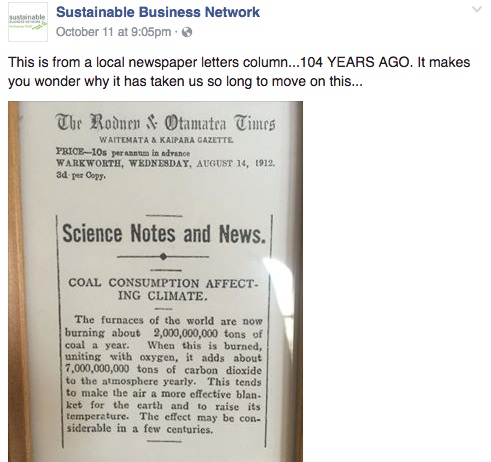













 In this Sept. 11, 2001, file photo the twin towers of the World Trade Center burn behind the Empire State Building in New York after terrorists crashed two planes into the towers causing both to collapse. (MARTY LEDERHANDLER / THE ASSOCIATED PRESS)
In this Sept. 11, 2001, file photo the twin towers of the World Trade Center burn behind the Empire State Building in New York after terrorists crashed two planes into the towers causing both to collapse. (MARTY LEDERHANDLER / THE ASSOCIATED PRESS) 
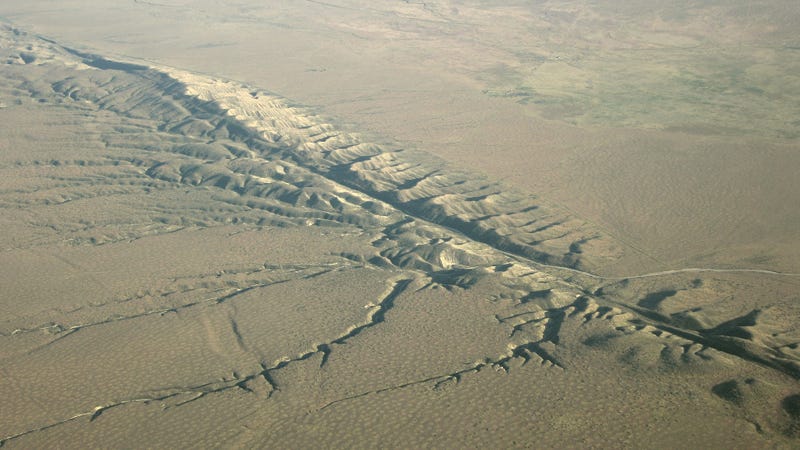 The USGS estimates a 1 in 100 chance of the San Andreas Fault rupturing between now and October 4. (Image: SanAndreasFault.org)
The USGS estimates a 1 in 100 chance of the San Andreas Fault rupturing between now and October 4. (Image: SanAndreasFault.org)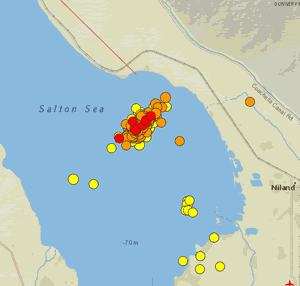
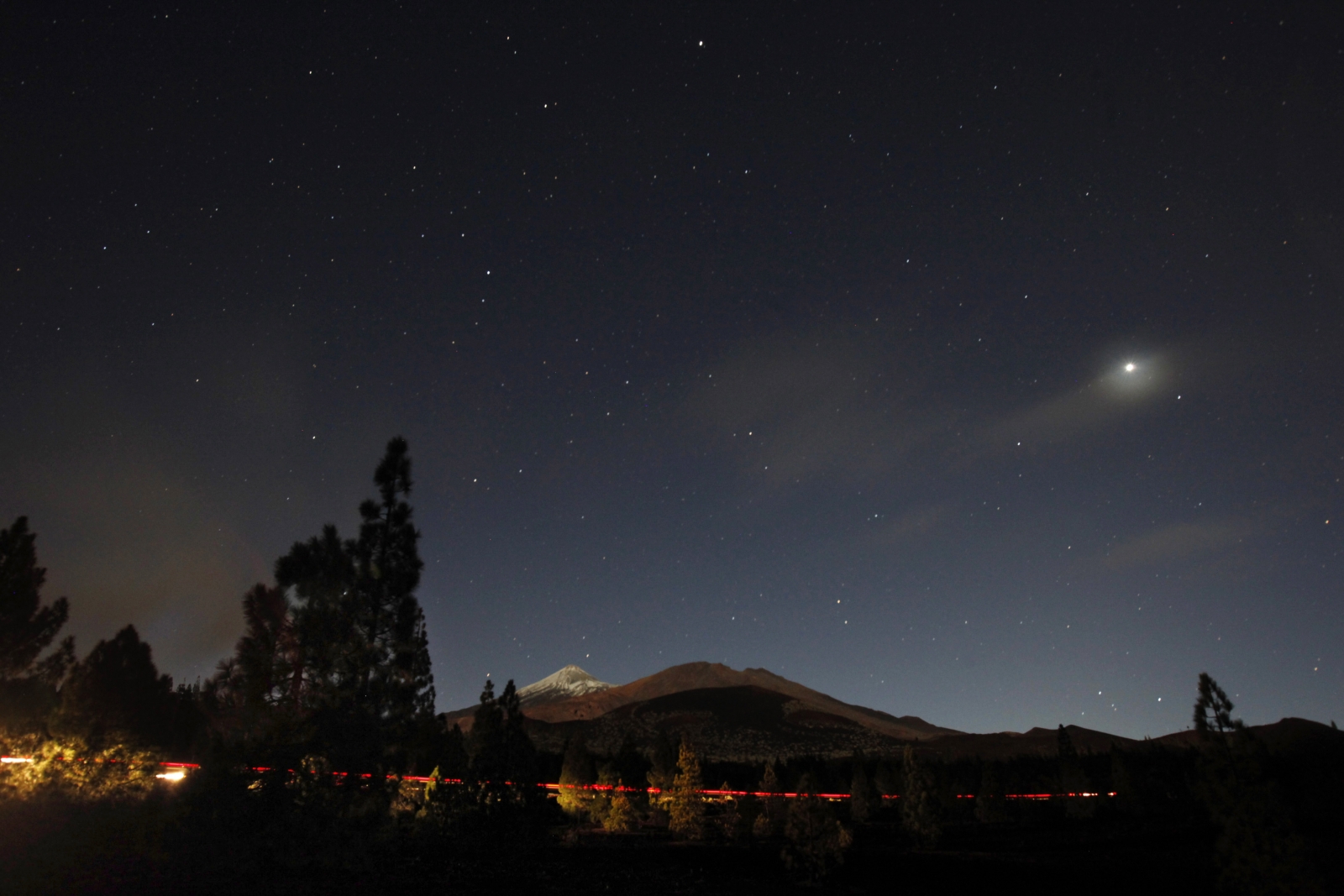 The volcano Teide is pictured in 2010 during a total lunar eclipse, in the National Park of Teide on the spanish canary island of Tenerife (Getty)
The volcano Teide is pictured in 2010 during a total lunar eclipse, in the National Park of Teide on the spanish canary island of Tenerife (Getty)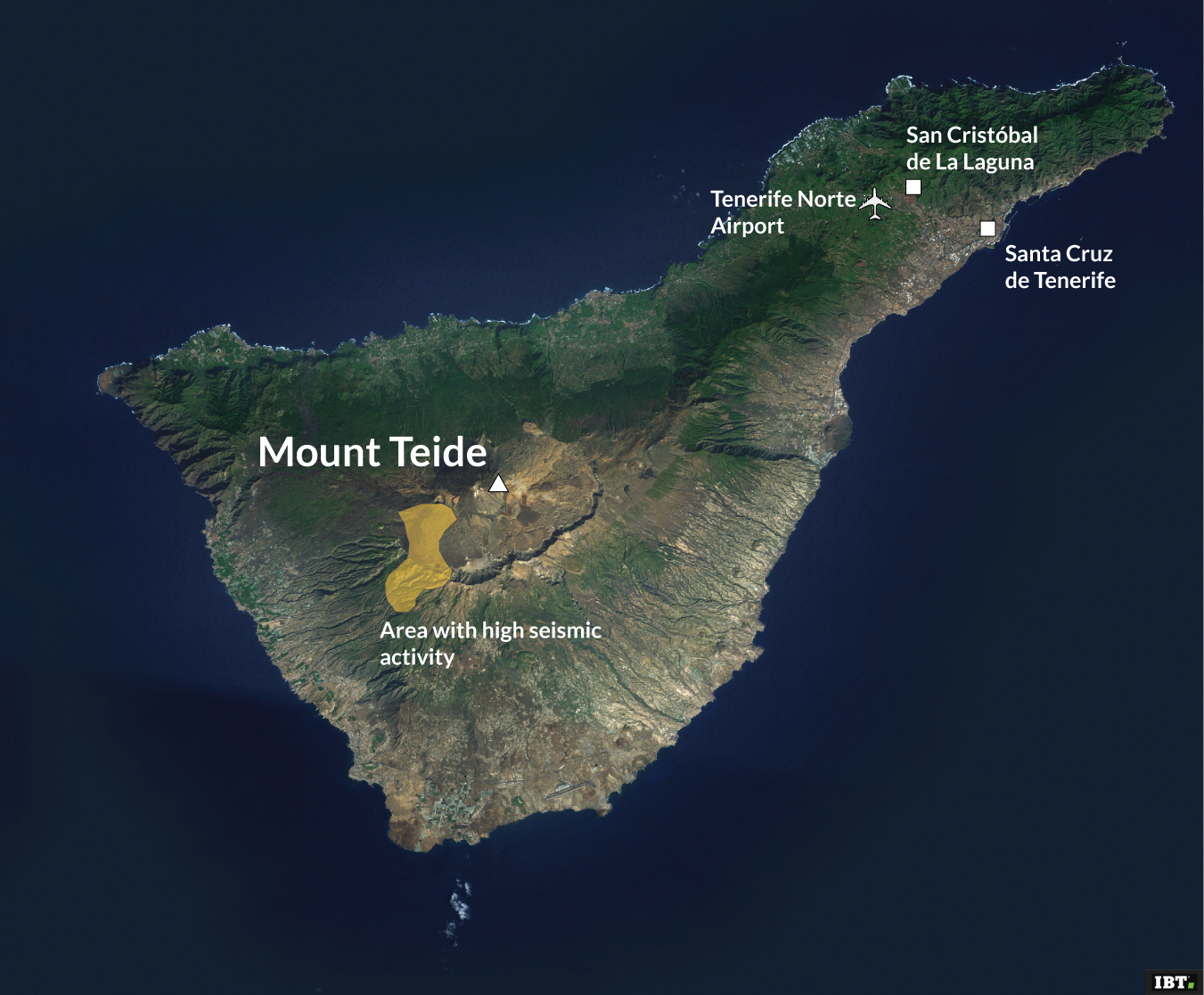 Volcanologists on the island have said the pattern of the earthquakes is an alignment with prevailing direction northeast to southwest (IBTimes UK)
Volcanologists on the island have said the pattern of the earthquakes is an alignment with prevailing direction northeast to southwest (IBTimes UK)